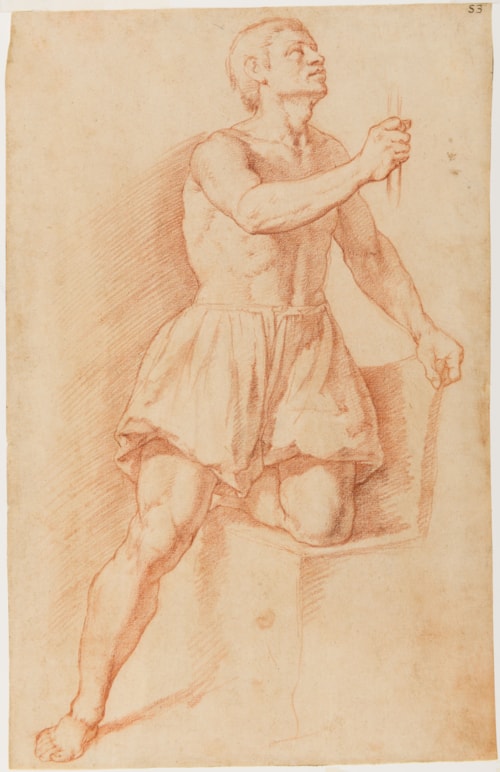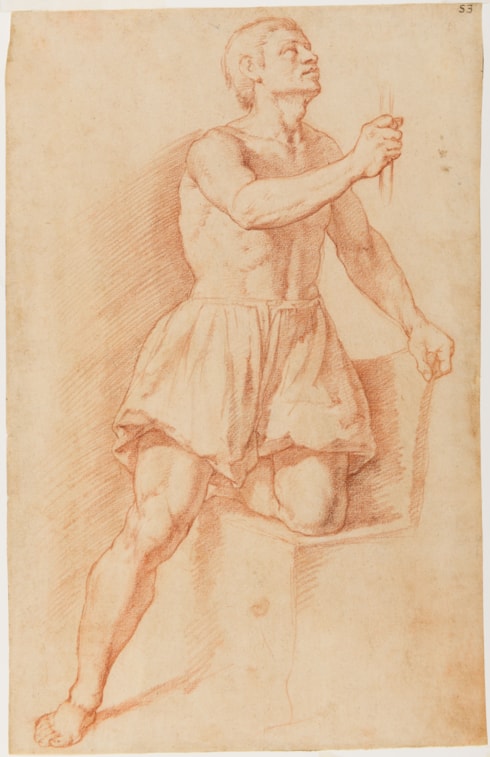
Bartolomeo CESI
Bologna 1556 - Bologna 1629
Biography
According to his biographer Carlo Cesare Malvasia, Bartolomeo Cesi was a pupil of Giovanni Francesco Bezzi, known as Nosadella. His earliest documented works are a series of frescoes in the Vezza chapel in the church of Santo Stefano in Bologna, executed in 1574 when he was only eighteen years old. At around the same time he also worked in the church of San Pietro in Bologna, alongside Prospero Fontana and Camillo Procaccini. While Cesi’s early work reflects the influence of the Bolognese Mannerism of his elders, a presumed trip to Rome in 1591 exposed him to a more restrained, Counter-Reformation style of painting that he adopted in his mature work. In Bologna between 1594 and 1595 Cesi painted a fresco cycle of the Life of the Virgin in the church of Santa Maria dei Bulgari, largely destroyed during the Second World War, and in 1595 also completed an Adoration of the Magi for San Domenico. By this time he was well established as one of the foremost religious painters in Bologna, painting numerous works for local churches as well as smaller devotional pictures for private patrons.
At the turn of the century Cesi was employed on the fresco decoration of several rooms in the Palazzo Fava, through which he came into close contact with the work of the Carracci, whose frescoes for the same palace had been completed a few years earlier. This was, however, one of the few secular commissions he undertook. Cesi’s work is almost entirely religious in subject matter, and the artist remained closely associated with several monastic orders throughout his long career. Among his significant works of the 1590s are frescoes for the Palazzo Comunale in Imola and an altarpiece for San Domenico in Bologna. For the latter church he also participated in the decoration of the chapel of the Rosary in 1601, in collaboration with Guido Reni and Ludovico Carracci. Among his more important later projects were several frescoes and paintings of Carthusian saints and subjects for the choir of the Certosa of Bologna, generally dated between 1612 and 1616. After this point, however, his output seems to have declined considerably in the last decade of his life.
The largest extant group of drawings by Bartolomeo Cesi is today in the collection of the Uffizi in Florence, and significant groups are also in the Palazzo Rosso in Genoa and the Martin von Wagner Museum in Würzburg. Other drawings by the artist are in the Museo Civico in Bassano, the Pinacoteca Nazionale in Bologna, the Fitzwilliam Museum in Cambridge, the Art Institute of Chicago, the British Museum and the Courtauld Institute Galleries in London, the Los Angeles County Museum of Art, the Museo del Prado in Madrid, the Pinacoteca di Brera in Milan, the Metropolitan Museum of Art in New York, the Fondation Custodia and the Louvre in Paris, the Boijmans Van Beuningen Museum in Rotterdam, the Staatsgalerie in Stuttgart, the Albertina in Vienna, the Royal Library at Windsor Castle, and elsewhere.


